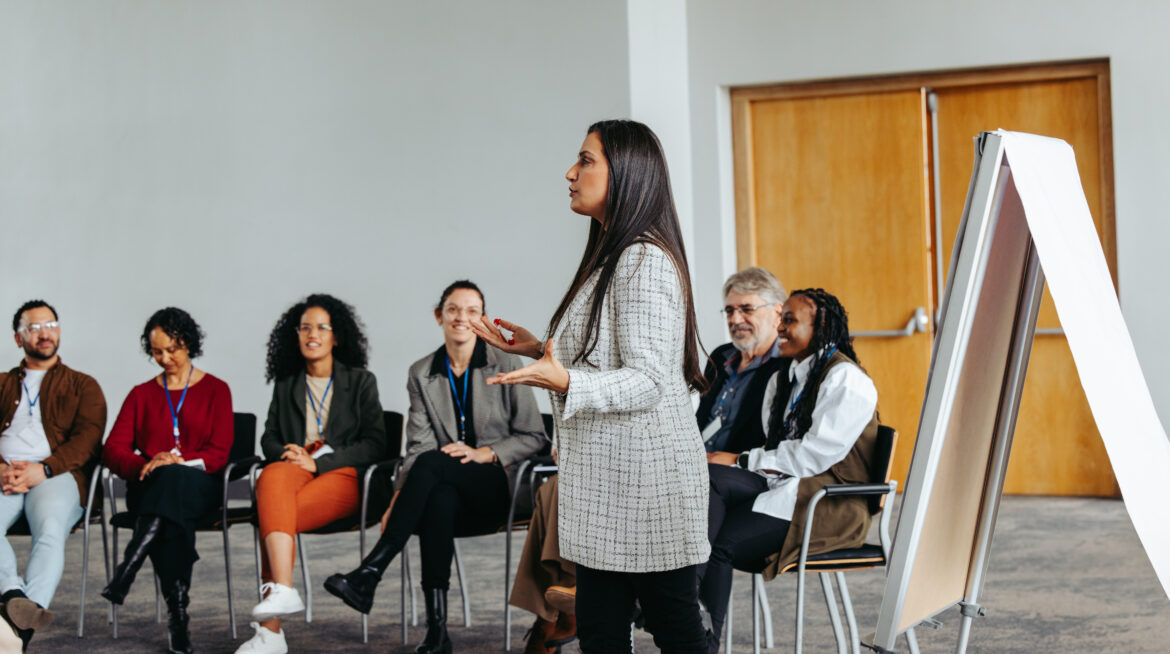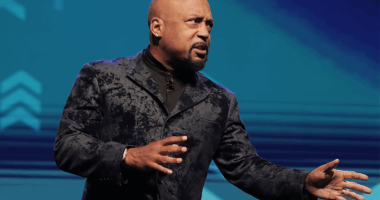Leading PLCs for Impact
Session notes from “Leading PLCs for Impact," presented by Gabe Hackett, at UNITED: The National Conference on School Leadership.

What was the speaker’s main message?
Brist: While the research on the impact professional learning communities (PLCs) and collaborative time can have in our schools is clear, the challenges are apparent and ubiquitous. Therefore, school leaders must develop the capacity of their PLC teams to improve teaching and learning by connecting actions to impact in the classroom through effective facilitation. Tools and protocols can help define that journey in order to build collective efficacy in your school through confidence, competence, and tools.
Falasco: The speaker emphasized the power of using structured tools and a shared vision to transform PLCs into effective, collaborative spaces that improve student outcomes. By focusing on building leadership capacity and collective efficacy, schools can overcome common challenges that hinder collaboration. Tools like the Collaboration Filter and Strategy Review support this transformation by making conversations focused, inclusive, and actionable.
What were the speaker’s best quotes?
Brist:
“The sad reality is that in a dysfunctional work environment, being honest works against you and keeping quiet is seen as loyalty. Successful PLCs cannot thrive under this system, our PLCs need to recalibrate. We need to be honest with teachers for the sake of our students and the school. We need to move from planning to action—from what we are teaching to why we are teaching it.”
“PLC tools gain us time, especially when we share impactful strategies with our peers.”
“It’s less about what we did. Its more about what we observed as a result of what we did, and why we think that happened.”
Falasco:
“If we don’t have a shared vision, it’s just not going to happen.”
“Results matter. We need to make it easier for educators to connect their actions to classroom impact.”
What were the top ideas from the session?
Brist:
- PLCs take a lot of collaboration and coordination to operate effectively. Two areas to consider as you think about challenges: 1) is there a skill versus will problem? (example) and 2) do you have reluctant (doubts, questions, need time) or resistant teachers (jaded, resentful, afraid)? Each of these requires a different approach.
- Collaboration Filter Tool (see below)
- Strategy Review Tool (see below)
Falasco: One major idea was the Collaboration Filter Tool, which helps teams identify and overcome barriers to collaboration. Another was the Strategy Review Tool, modeled after TripAdvisor, allowing teachers to share, rate, and reflect on instructional strategies. The third was a focus on building collective efficacy, empowering all staff to share leadership and contribute meaningfully to student success.
What is one strategy to implement immediately?
Brist: The Collaboration Filter Tool is designed to help teams break through the common challenges that disrupt or weaken collaboration (e.g., unclear expectations, misaligned priorities, lack of trust, or competing agendas). This tool helps teams identify, address, and remove barriers that get in the way of effective teamwork. By guiding teams through a process of reflection, prioritization, and action, the Collaboration Filter Tool ensures that PLCs are purposeful and impactful; it helps shift focus from obstacles to solutions, making every collaboration session productive and results-driven.
Falasco: I will start using the Strategy Review Tool during a staff meeting, asking teachers to share one effective strategy they’ve used. This will create a quick, focused opportunity for sharing across grade levels and roles. It also promotes reflection, peer learning, and collective ownership of instructional growth.
What is one strategy that will help you with instructional leadership?
Brist: Like TripAdvisor for teachers, the Strategy Review Tool is a structured approach to documenting and reflecting on instructional strategies. By using this tool, educators can effectively summarize and share the tips, tricks, and pitfalls experienced throughout their learning journey, fostering transparency and collaboration across their teams. This resource helps teams align their efforts, celebrate successes, and identify areas for improvement. Used in a staff meeting, this tool can become a powerful way share best practices.
Falasco: Using the Collaboration Filter Tool will help structure PLCs with a clear focus on removing obstacles and building productive habits. It shifts the conversation away from blame and toward shared responsibility by using the tool as a neutral guide. This supports my role in facilitating effective, inclusive team conversations centered on student learning.
What is one idea you want to learn more about?
Brist: FIRST Educational Resources—Billed as powerful, affordable, and sustainable professional development, FIRST offers a variety of professional support in the areas of artificial intelligence, behavior/executive functioning, assessment and grading, collective efficacy, co-teaching, instructional coaching, mathematics, PLCs, and publishing. There are a plethora of free resources in a variety of areas that will give any school leader a jump start on professional development ideas.
Falasco: I want to learn more about collective efficacy and how to intentionally build the enabling conditions that support it. The session mentioned Jenny Donohoo’s research, which I’d like to explore. Understanding how to move from individual success to team-wide impact is critical for school improvement.
What are resources you will check out?
Brist and Falasco: The presenter provided for tools from the PLC Center at First Educational Resources. I will also look into Jenni Donohoo’s book Collective Efficacy: How Educators’ Beliefs Impact Student Learning.
I can’t wait to tell my teachers about this idea:
Falasco: I’m excited to introduce the idea of Strategy Share Sessions during staff meetings. Teachers from different grades and specialties will share real strategies that worked, creating a culture of learning and support. It’s a simple way to elevate teacher voice and spark new ideas across the building.
Notes by Todd L. Brist, principal of Watertown Middle School in Watertown, South Dakota, and Tara Falasco, principal of Blue Point Elementary School in Blue Point, New York. Read more session notes in the NAESP Conference Blog.




